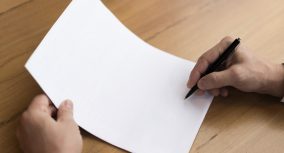Any literary analysis is a challenging task since literature includes many elements that can be interpreted differently. However, a stylistic analysis of all the figurative language the poets use may seem even harder. You may never realize what the author actually meant and how to comment on it!
While analyzing poetry, you should pay attention to the form of writing and its content. The purpose of this article byCustom-Writing.orgexperts is to give you a hand in understanding the rules and structure of poem analysis. First of all, there is some general information regarding the topic. Then, you will find a detailed step-by-step guide, followed by a poetry analysis essay example.
So, don’t worry, you can definitely rock a poem analysis essay! Knowing is half the battle, and practice is the other half!

So, don’t worry, you can definitely rock this assignment! Knowing is half the battle, and practice is the other half!
❓ What Is the Purpose of Poetry Analysis?
Sometimes you may find yourself lost in the structural elements and隐喻of the poems. You start wondering what the purpose of poetry analysis is. In fact, it’s a matter of yourpersonal opinion. The aim isto review someone else’s understanding of the poem, appreciate it, and maybe introduce a new point of view.
How to Analyze a Poem: Main Steps
The fact is that poetry has a lot of exciting stuff to offer. However, it can seem quite overwhelming when you don’t know where to begin. The secret tip is to break it down into small tasks. That is why we suggest you look through the following steps when you need to write a poem analysis essay.
Poetry Analysis Essay: Outline
Nothing can help you with the writing process more than creating anoutlinefor your poetry analysis essay. It can help you organize your ideas and thoughts better so that you don’t get lost. After completing the outline, the only thing you need to do is to follow the plan!
Finishing this part of the writing process is basically half of the job. After this, you can complete your paper in no time!
Poetry Analysis Essay: Examples
Go through this example of a poem analysis essay to better understand how it should look. Note that the sample is structured according to the outline and the writing steps described in the above sections.
Poem Analysis Essay: A Dream Within a Dream by Edgar Allan Poe
Poem Analysis Essay Topics
-
AnalyzeSonnet 18byWilliam Shakespeare.
-
Stylistic devices used in the poemDaddyby Sylvia Plath.
-
Discuss the theme of the poemBecause I Could Not Stop for Deathby Emily Dickinson.
-
Analyze the distinctive features ofthe epic poemSir Gawain and the Green Knight.
-
Examine the devices used byPhilip Larkin inThe Explosion.
-
Analyze the epic poemIliadby Homer.
-
The importance of rhythm inSo, We’ll Go No More a-Rovingby George Gordon Byron.
-
Discuss the basic elements of甜酒et Decorum Estby Wilfred Owen.
-
Discuss the importance of symbols in the epic poemOdysseyby Homer.
-
Examine the women characters portrayed inRich’s poemWomen.
-
Analyse the stylistic devices Wystan Hugh Auden uses to describe grief in hispoemFuneral Blues.
-
Interpret the use of free verse inWomenby Alice Walker.
-
The DonkeybyGilbert Keith Chesterton: poem analysis.
-
Describe the techniquesMatsuo Bashouses to convey the splendor of nature.
-
Compare the devicesE. Dickinson, J. Donne, and A. Sextonuse to present different attitudes towards death.
-
Analyze rhetoric devices used inGary Soto’spoems.
-
Identify the core idea of the poemRoot Cellarby Theodore Roethke.
-
Reflection of the original culture inthe epic poemBeowulf.
-
Analyze the poemDaystarbyRita Dove.
-
Analyze and compare the poems Heavenby Cathy Song andLa Migraby Pat Mora.
-
Return to childhood in poems byHayden and Roethke.
-
Examine the main idea of Horace’s poemThe Sacred Vine.
-
Describe the means Brooks uses to express her ideas in the poemPrimer for Blacks.
-
Analyze the poemThe White Man’s Burdenby Rudyard Kipling.
-
Compare how the authors describe relationships between children and fathers in RhinaEspaillat’sBilingual/Bilingüeand Robert Hayden’sThose Winter Sundays.
-
Discuss the stylistic devices used to convey the emotions in poems about war byBorden, Owen,Grenfell and Seaman.
-
Examine the importance of the structure inPoem for Harukoby June Jordan.
-
La Belle Dame sans MercibyJohn Keats: poem analysis.
-
Analyze the vocabulary used inDesert Placesby Robert Frost.
-
Describe the rhetorical devices inAmerican Arithmeticby Natalie Diaz.
-
The poetic features inSong of Myselfby Walt Whitman.
-
The main idea ofThe New Colossusby Emma Lazarus.
-
Discuss the role of strong imagery inLangston Hughes’ poemDream Deferred.
-
The important features ofThe Waste Landby Eliot.
-
The meaning of symbols inThe Bitter Riverby Langston Hughes.
-
Analyze the poemWhen You Are Oldby William Yeats.
-
Present the interpretation of the poem She Being Brandby E. E. Cummings.
-
Examine the main idea of the poemMy Last Duchessby Robert Browning.
-
Describe the techniques used byMarianne Mooreto achieve realism in her poemMarriage.





![Short Story Analysis: How to Write It Step by Step [New]](http://www.allgiftz.com/blog/wp-content/uploads/2020/12/man-sits-end-trolltunga-before-mountains-284x153.jpg)
